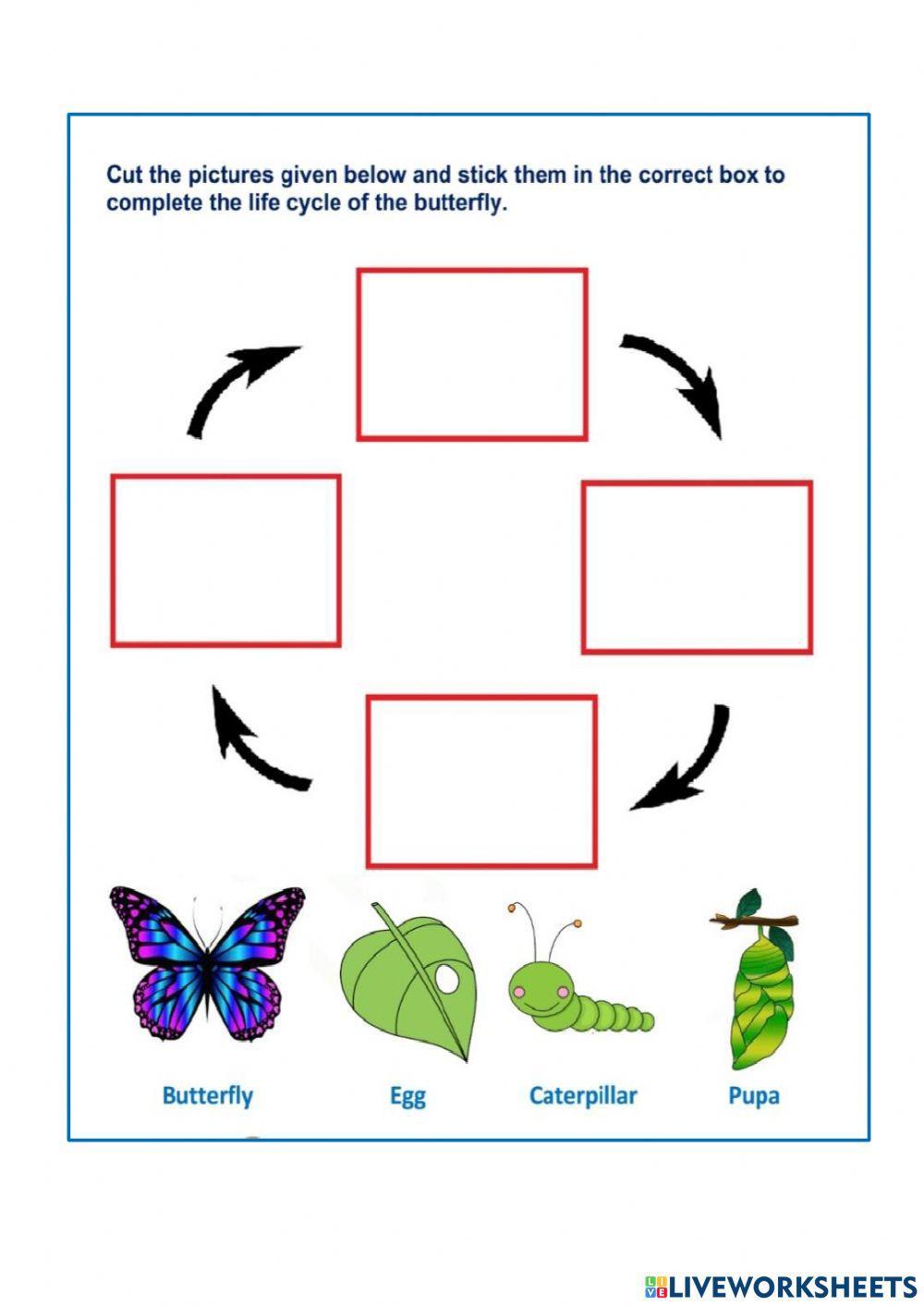From Campus Farm To Classroom: Exploring Animal Life Cycles With Students

Table of Contents
Selecting Appropriate Animals for Study
Choosing the right animals is crucial for a successful animal life cycle curriculum. The key is to select species with readily observable life cycles, ensuring both educational value and ethical considerations.
Choosing Species with Observable Life Cycles
The best candidates are those with relatively short lifespans and easily discernible developmental stages. This allows students to witness significant changes within a reasonable timeframe.
- Chickens: Observing the entire life cycle, from egg to chick to adult hen, provides a clear and impactful demonstration of metamorphosis.
- Butterflies: The stunning transformation from caterpillar to chrysalis to butterfly captivates students and vividly illustrates complete metamorphosis.
- Mealworms: These readily available insects offer a fascinating glimpse into the life cycle of beetles, showcasing metamorphosis in a smaller, easily managed context.
- Fruit Flies (Drosophila): These are excellent for demonstrating rapid life cycles and genetic variations.
- Daphnia (Water Fleas): Microscopic yet fascinating, these crustaceans are suitable for observing life cycles under a microscope.
Ethical sourcing is paramount. Prioritize obtaining animals from reputable suppliers committed to humane practices, ensuring the well-being of the animals throughout the learning process.
Ensuring Safety and Ethical Handling
Safe and ethical handling practices are non-negotiable. Specific protocols must be established and strictly followed, particularly when working with younger students.
- Supervision: Constant adult supervision is essential during all animal handling activities.
- Hygiene: Handwashing before and after handling animals is mandatory to prevent the spread of germs.
- Gentle Handling: Animals should be handled gently and with respect, minimizing stress and injury.
- Permits: Check local regulations and obtain any necessary permits for keeping and handling the chosen species.
- Emergency Protocols: Develop a clear plan for dealing with any unexpected incidents or animal injuries.
Designing Engaging Hands-on Activities
The campus farm offers a unique setting for interactive learning. Moving beyond passive observation, students should actively participate in the learning process.
Observation and Recording
Structured observation activities are key to understanding animal life cycles. These activities should engage multiple senses and encourage meticulous record-keeping.
- Life Cycle Charts: Students can create visual representations of the life cycle, charting the different stages and noting key characteristics.
- Journals: Maintaining detailed journals allows students to document their observations, including sketches, measurements, and descriptions of behavior.
- Photography/Videography: Capturing images and videos allows for later review and analysis, offering a lasting record of the learning experience.
- Growth Measurements: Regularly measuring the animals (e.g., length, weight) helps students visually track developmental changes over time. Age-appropriate methods should always be prioritized.
Interactive Demonstrations and Experiments
Hands-on experiments reinforce learning and make the process more engaging.
- Butterfly Habitat: Creating and maintaining a butterfly habitat provides an immersive experience, allowing students to witness the metamorphosis firsthand.
- Mealworm Metamorphosis: Observing mealworm development in a controlled environment demonstrates the transformation into beetles.
- Chicken Egg Hatching (if appropriate): This provides a powerful visual representation of embryonic development. (Note: this activity requires careful planning and ethical considerations regarding the chicks' post-hatching care).
Integrating Technology for Enhanced Learning
Technology can greatly enhance the learning experience, supplementing hands-on activities.
- Microscopes: Using microscopes to examine smaller organisms (like daphnia) reveals intricate details invisible to the naked eye.
- Digital Presentations: Students can create digital presentations showcasing their findings, enhancing their communication skills.
- Educational Apps and Websites: Numerous resources are available online, providing supplementary information and interactive learning tools. For example, exploring virtual labs or interactive simulations of life cycles.
Connecting Classroom Learning to Real-World Applications
Understanding animal life cycles extends beyond the classroom, connecting to broader ecological concepts and real-world applications.
Understanding Ecosystem Dynamics
Learning about animal life cycles helps students understand the complexities of ecosystems.
- Food Webs: Students can explore how animals interact within food webs, identifying predator-prey relationships and the flow of energy.
- Habitat Preservation: Understanding life cycle requirements helps students appreciate the importance of habitat conservation.
- Impact of Human Activities: Students can analyze how human activities (pollution, habitat destruction) can negatively affect animal life cycles.
- Conservation Efforts: Discussing conservation efforts and responsible stewardship fosters a sense of environmental responsibility.
Promoting Scientific Inquiry and Critical Thinking
These activities promote valuable scientific skills, fostering critical thinking and problem-solving abilities.
- Guiding Questions: Pose open-ended questions to encourage students to formulate hypotheses and design their own investigations. (e.g., "What factors might influence the rate of development in mealworms?")
- Data Analysis: Students should learn to analyze their data, draw conclusions, and communicate their findings effectively.
- Problem-Solving: Encourage students to troubleshoot challenges encountered during the experiments (e.g., addressing issues in a butterfly habitat).
Conclusion
Utilizing a campus farm to teach animal life cycles offers an unparalleled learning opportunity. By providing hands-on experiences, interactive activities, and connections to real-world applications, we can transform the learning of animal life cycles into a captivating and enriching experience. Students develop a deeper understanding of these intricate processes, fostering scientific inquiry, critical thinking, and a sense of responsibility towards the environment. We encourage educators to incorporate campus farm resources into their curriculum to enhance their students' understanding of animal life cycles, explore the different stages of animal life cycles, and share their innovative approaches with fellow educators, creating a network of best practices to inspire future generations of nature enthusiasts and scientists. Find a local farm near you or collaborate with your school's science department to create your own engaging curriculum centered around animal life cycles!

Featured Posts
-
 Eva Longorias Unrecognizable Transformation The Power Of Sun Kissed Highlights
May 13, 2025
Eva Longorias Unrecognizable Transformation The Power Of Sun Kissed Highlights
May 13, 2025 -
 Sir Ian Mc Kellens Early Coronation Street Appearance A Stepping Stone To Success
May 13, 2025
Sir Ian Mc Kellens Early Coronation Street Appearance A Stepping Stone To Success
May 13, 2025 -
 News Roundup Air Traffic Controller Concerns Significant Criminal Trials And Thc Infused Drinks
May 13, 2025
News Roundup Air Traffic Controller Concerns Significant Criminal Trials And Thc Infused Drinks
May 13, 2025 -
 74 A Prekonavanie Predsudkov V Prenajme Nehnutelnosti
May 13, 2025
74 A Prekonavanie Predsudkov V Prenajme Nehnutelnosti
May 13, 2025 -
 Experience Japans Cherry Blossoms A Springwatch Guide
May 13, 2025
Experience Japans Cherry Blossoms A Springwatch Guide
May 13, 2025
